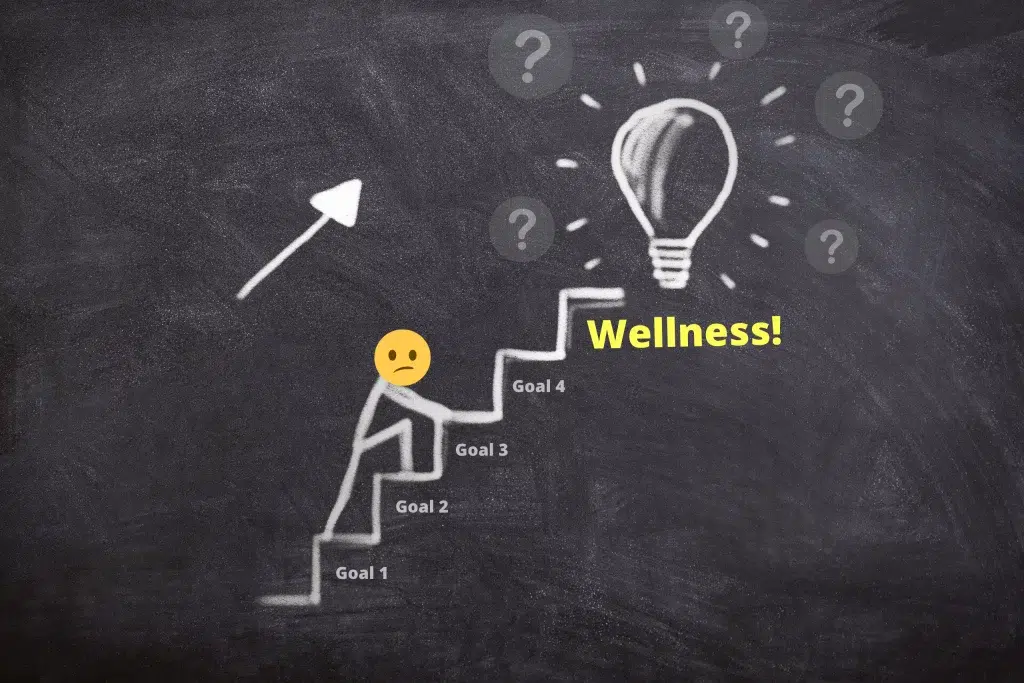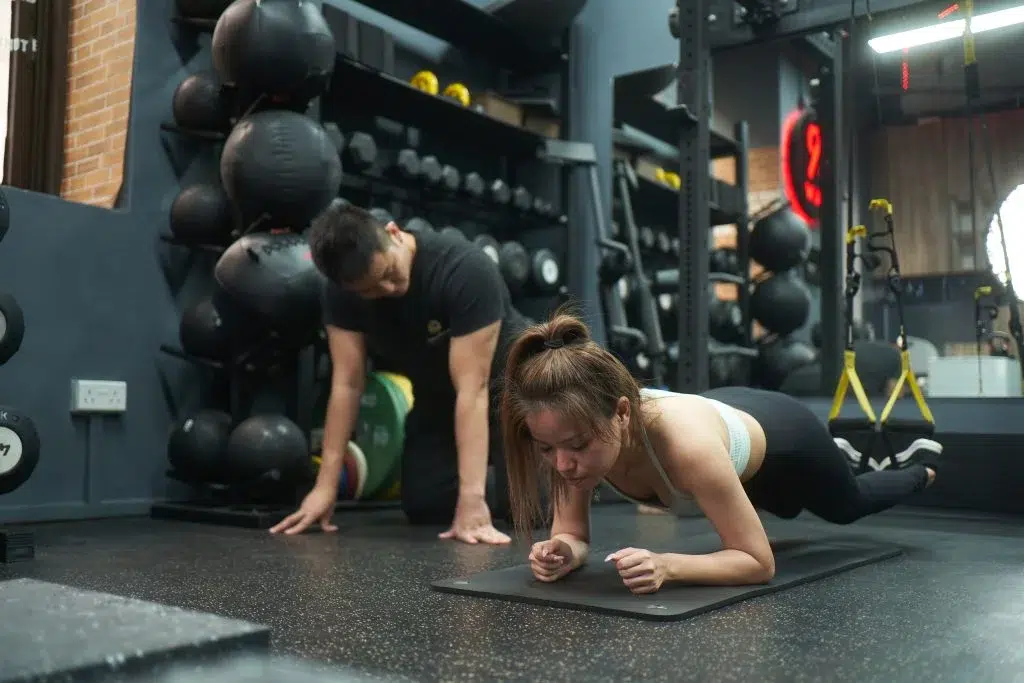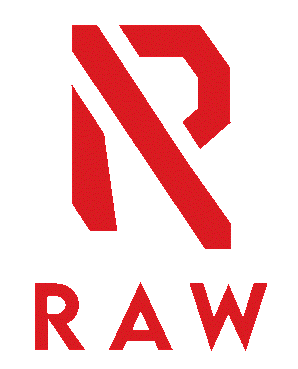Part 1: Achieve Caloric Deficit
If one of your fitness goals is to lose weight and reduce body fat, you’ve definitely heard of popular diets like the Keto Diet, Fad Diet, and intermittent fasting. There’s a chance you’ve already given it a shot. Perhaps you are already following one of these diets. After going through the difficult process of dieting, you might not yet see the results you desire. Why is it the case? How is that even doable? If you are reading this, it means you are motivated to lose weight so you can look better. I am pleased to provide to you “Caloric Deficiency” as a result.
What is a caloric deficit?
When the energy input (energy from food) is greater than the energy output (energy used in activities), which is sometimes referred to as “metabolism” in laymen’s language, there is a caloric deficit, also known as a negative energy balance. An energy balance that is negative is depicted in the diagram below.

No matter what diet you follow or what you eat during the day, the only thing that will help you lose weight is a calorie deficit. If you wind up in a calorie deficit, you can eat meals from McDonald’s for breakfast, lunch, and dinner and still lose weight. Energy in vs. energy out is all there is to fat loss. Here’s an illustration: No matter how good the engine or fuel, a car cannot move without the wheels attached. Similarly, no matter how “good” your diet is, fat loss cannot be fueled without a calorie deficit. So let’s examine the variables influencing energy consumption.
What affects Energy Expenditure?
Energy expenditure consists of the following:
- Basal Metabolic Rate (BMR)
- Non-Exercise Activity Thermogenesis (NEAT)
- Dietary Induced Thermogenesis (DIT)
- Exercise Activity Thermogenesis (EAT)
Basal Metabolic Rate (BMR) refers to the number of calories your body burns when it conducts its biological activities to keep the body alive. Examples include breathing and digestion. Your age, weight, height, gender, and other factors can alter BMR.
Exercise Alternatives The number of calories your body expends during any activity that is not related to sports or sleeping is referred to as thermogenesis (NEAT). Examples include cleaning, gardening, and dishwashing.
The number of calories your body expends after eating is referred to as dietary induced thermogenesis (DIT), also known as the thermic effect of food. As a result of different foods’ varying thermic effects, different amounts of calories are required to digest and absorb each one.Physical Activity The number of calories your body burns while exercising or participating in sports is known as thermogenesis (EAT). Running, bowling, golfing, or lifting weights are a few examples.
Exercise Activity Thermogenesis (EAT) refers to the number of calories your body burns when exercising or taking part in sports activities. Examples include, running, bowling, golfing, or lifting weights.
The diagram below illustrates how each of these components make up your energy expenditure.
|
Exercise Activity Thermogenesis |
|
Dietary Induced Thermogenesis |
|
Non-Exercise Activity Thermogenesis |
|
Basal Metabolic Rate |
All these components make up your Total Daily Energy Expenditure (TDEE). However, how do you figure out exactly what is your TDEE? How do you create a caloric deficit? Fret not, we will explain it to you in detail.
How to Calculate TDEE?
Calculating BMR
Basal Metabolic Rate (BMR) can be calculated using an equation based off research! AMAZING, isn’t it? Let’s look at the equation
Schofield (1985)
| Female | |
| 10 – 17 years 13.4 W + 692 | |
| 18 – 29 years 14.8 W + 487 | |
| 30 – 60 years 8.3 W + 856 | |
| 60 years and above 9.0 W + 656 |
*W = bodyweight in kg
| Male | |
| 10 -17 years | 17.7 W + 657 |
| 18 – 29 years | 15.1 W + 692 |
| 30 – 60 years | 11.5 W + 873 |
| 60 years and above | 11.7 W + 585 |
*W = bodyweight in kg
For example, I am a 19-year-old male weighing 72.3kg.
My BMR would be
= 15.1 (72.3) + 692
= 1783.73kcal
SIMPLE!! Being able to calculate your BMR would allow you calculate your Total Daily Energy Expenditure (TDEE).
Calculating TDEE
The diagram below shows how you can calculate your Total Daily Energy Expenditure (TDEE) using your calculated BMR.
| Activity Level | Description | Calculation |
| Sedentary | Little to no exercise | BMR x 1.2 |
| Light Exercise | 1 – 3 days per week | BMR x 1.375 |
| Moderate Exercise | 3 -5 days per week | BMR x 1.55 |
| Very Active | 6 – 7 days per week | BMR x 1.725 |
| Extremely Active | 2 times per day / physical job | BMR x 1.9 |
For example, if my activity level is “very active”,
my TDEE would be
=1783.73 x 1.725
=3076.93kcal
WOW! Wasn’t that simpler than elementary school math? No problem! How do we go about producing that calorie deficit given the knowledge we currently have?
How to create a caloric deficit?
A good rule of thumb when deciding how much of a deficit you want would be around 200 – 500 calories for healthy weight loss. For example, since my Total Daily Energy Expenditure (TDEE) was 3076.93kcal, I would be in the 2576.93kcal – 2876.93kcal range when aiming for a caloric deficit. It is important to have a range for your daily calorie target as it is IMPOSSIBLE to hit EXACTLY an amount of calorie count every single day. It is extremely impractical. Hence, decide on the range, and commit to it.
How to know how many calories I consumed?
I recommend MyFitnessPal to anybody who is looking to track their calories for free. They have a wide variety of food options, allowing you to track both home-cooked food and outside food. It is not 100% accurate but it gets you in the right ballpark.

Part 2: Set Your Wellness Vision
“Why you can’t achieve your goals?”
“Why am I doing this?”
When pursuing your fitness and health goals, have you ever asked yourself this question?
Have you ever acknowledged that your so-called health and fitness goals may not always be what you actually want? In actuality, it’s because someone told you it would be beneficial for you.
Have you ever felt unfulfilled despite achieving your fitness and health goals?
One of the reasons why you may be feeling this way is because it doesn’t align with your Wellness Vision (or maybe you don’t have one, and it’s fine!). Wow, Wellness Vision is a huge and heavy word for me when I learnt about it from Wellcoaches. In fact, it turns off a lot of people. But it did clarify a lot of things for me and I hope you find it helpful too!
So what’s a Wellness Vision?
“A Wellness Vision is a compelling statement of who you are and what health-promoting, life-giving behaviours you want to do consistently.”
You won’t get your own Wellness Vision “right” the first time, which is a fascinating aspect to consider. To actually proclaim “YES! THIS IS IT!” you will need to go through numerous iterations of exploring and improving.
Why is Wellness Vision important?

I used the following analogy with my clients: “Consider driving a car in a dense fog; you won’t see you are in front of a pillar until you are directly in front of it. Having a wellness vision is like removing the fog so you can see more clearly what is in front of you. The fog gradually dissipates as you refine it more and more.
So, it gives you:
- Clarity.
- Meaning to the goals you set.
- Sense of direction and purpose.
- Motivation.
- Autonomy.
- Leverage your strengths and values.
3 Steps to create your own Wellness Vision
Step 1 – Visualization Tool
This is a 5-10 minutes visualization tool I took from Wellcoaches and find it helpful for my clients. I find that it’s also better to have someone read this out slowly for you.
- Close your eyes, take a deep breath in, and slowly breathe out.
- In your mind, go to a quiet place where you feel comfortable, peaceful, strong, and confident. You feel relaxed. What does your quiet place look like? How do you feel about being there? Notice what’s around you.
- Picture yourself (one year, 5 years, etc) from now. What does your health, fitness, or wellness look like? How do you look physically? What are you wearing? How does your body move? Notice any other changes in your life. Describe what you are doing, feeling, and thinking regarding your wellness.
- Imagine that it is 5 years from now, and you have accomplished your goals. What does it feel like? What are you doing differently? What is the same? What did you do to get there? Who’s around you? What activities are you doing? Describe your health now. Who has helped you along the way?
- Think of one keyword/metaphor/picture to summarize this experience and/or your commitment to health, fitness, and wellness.
Step 2 – Create your Wellness Vision statement starting with “I am..”
Let me share mine with you, if you don’t mind.
I am like a Superman, being strong emotionally and physically. I feel powerful and have the ability to lend a helping hand or listening ear to people whenever they need me. I am physically active and mobile, without having much aches and pains. I am able to regulate my emotions properly so I can enjoy and expand my emotion bank.
Step 3 – Set goals using your Wellness Vision
So what’s next?
Once you have your Wellness Vision, set goals that aligned with your Wellness Vision.
Your goals are like stepping stones towards your Wellness Vision, and not the other way round.
Give it a go and share it if you find this helpful!
Conclusion of Wellness Vision
In conclusion, it is irrelevant what you eat or how much exercise you get. If you are not eating less than your total daily energy expenditure, you can exercise for five hours a day and still gain weight or fat. If your calorie intake is greater than your daily energy expenditure, even if you eat salads for breakfast, lunch, and supper, you could still gain weight or fat. You are not in a calorie deficit, and that is the sole and only reason why you are not shedding weight or fat. SIMPLE! You can lose fat if you maintain a calorie deficit and are dedicated to doing so.

Part 3: Get Help From Personal Trainer
Whether you want to improve your overall health and wellness, become more active, or reduce your weight, personal training may be the perfect choice for you. You might be able to achieve your fitness goals more quickly and effectively with personal training than you would on your own thanks to its many benefits. In this post, we’ll talk about the importance of personal training and why it can be the best choice for you.
Personalized Attention and Tailored Workouts
One of the main advantages of personal training is the customized attention you receive. Your workout regimen is tailored to your needs, goals, and physical capabilities when you work out with a personal trainer. A certified trainer will take into account your current level of fitness, medical background, and any limitations or ailments you might have while creating a workout program for you. They can also help with enhancing technique, avoiding injuries, and maximizing outcomes.
Increased Motivation and Accountability
Exercise on your own can be difficult, especially when it comes to keeping your motivation up. With the support and accountability of a personal trainer, you can maintain your goals and reach them. They can help you stay motivated by giving you words of encouragement and pushing you to reach your full potential. Knowing that someone is counting on you to show up for your workout can be a powerful motivator to keep you committed to your fitness goals.
Improved Results and Faster Progress
You have access to the expertise of a personal trainer when you work with them. By teaching new exercises, techniques, and routines that you would not have tried on your own, they may help you get the most out of your workout. They may also help you set reasonable goals, track your progress, and adjust your routine as required to keep you on the right path. With the right guidance, you might achieve your fitness goals more quickly and effectively than you would on your own.
Increased Confidence and Self-Esteem
One of the main advantages of personal training may be the increase in confidence and self-esteem. Once you start to see results from your workouts, you’ll start to feel better about yourself and your physique. A knowledgeable trainer can also help you get beyond any psychological or emotional obstacles that could be hindering your growth and shape you into a more confident and competent version of yourself.
Safe and Effective Workouts
Injuries are one of the largest obstacles to a successful workout program. If you engage with a personal trainer, you can feel confident knowing that you’re engaging in activities that are healthy and advantageous for you. They can assist you in avoiding overuse issues by making sure you are using good form. They can also modify exercises to account for any physical limitations or illnesses you might have. When you exercise with a personal trainer, you may do so with confidence and peace of mind.
Better Time Management
Exercise can be time-consuming, particularly if you try to fit it into a schedule that is already very busy. Personal training can help you get the most out of your workout and your time. With the help of a personal trainer, you may streamline your workouts and make better use of the gym. They can help you maximize your time by developing productive yet challenging routines.
Increased Enjoyment and Fun
Workout can get boring, especially if you do the same exercises over and over again. You can mix things up and have a more fun and enjoyable workout with personal training. To keep you motivated and interested, your personal trainer might introduce you to new workouts, routines, and activities. They can also assist you to alter things up and keep your training exciting in order to avoid boredom or burnout. You may boost your likelihood of staying with it and incorporating exercise into your lifestyle by making your workout fun and intriguing.
Better Understanding of Your Body and Fitness
One advantage of working with a personal trainer is the knowledge and understanding you gain about your body and fitness. A personal trainer may teach you about proper form, nutrition, and other essential components of a healthy lifestyle. They may also assist you in determining your strengths and weaknesses as well as how to work around any limitations or ailments you might have. If you are more conscious of your body and fitness, you can take control of your health and make wiser decisions.
Reduced Stress and Improved Mental Health
Exercise can have a big impact on your overall wellbeing and mental health. Exercise has been shown to reduce stress, improve mood, and boost self-esteem. Personal training can provide you with the support you need to include exercise in your self-care routine. A personal trainer can help you develop healthy routines, set reasonable goals, and stay motivated, all of which can enhance your overall physical and mental health.
Long-Term Success and Sustainability
Finally, personal training can help you succeed over the long run and sustain your progress. With the right guidance and motivation, you can establish healthy routines and incorporate fitness into your daily life. When things get tough, a knowledgeable personal trainer can support you in sticking with your goals and provide you with the tools and resources you need to keep getting better. Perhaps, personal training can open the way to long-term success and lifelong wellness.
Final Thoughts
In conclusion, personal training is a wise investment in your health and fitness. Given the benefits of specialized workouts, proper technique and form, higher motivation, better nutrition, injury prevention, time-efficient workouts, tailored attention, and long-term results, it is simple to understand why investing in personal training is valuable.
Nobody in the world is more familiar with your body than you are. But RAW has your back if you ever need some advice. If you’re prepared to change your way of life such that you put more emphasis on fat loss than weight loss, our personal training program can help you build the right workout regimens and nutrition plans.
You can change your life with just a click. Book a free consultation with us today and kickstart your workout sessions with the most competent trainers in Singapore.
- Unpacking the Mystery: Why Does Weight Gain Occur During Menopause? - October 22, 2024
- ACL and MCL Injuries: An In-depth Examination of Symptoms and Treatments - October 17, 2024
- Achieve Perfect Balance: Exploring the Benefits of Functional Training - October 17, 2024

11 Responses